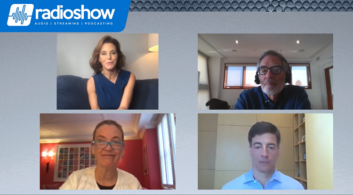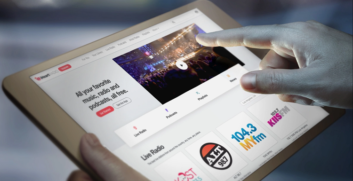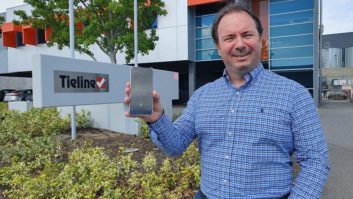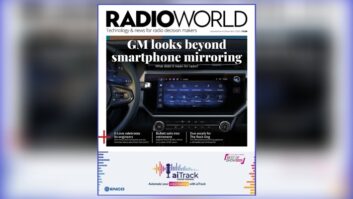
CEOs from three of the largest U.S. commercial radio groups believe their industry is well positioned to move past the COVID-19 pandemic when the time comes.
Mary Berner, president and CEO of Cumulus Media; David Field, chairman, president and CEO of Entercom Communications; and Bob Pittman, Chairman and CEO of iHeartMedia participated in a group conversation for the recent 2020 Radio Show, which was produced online by the Radio Advertising Bureau and the National Association of Broadcasters.
The business leaders gave their views about the massive business disruption and the challenges and opportunities it has presented.
They described a phenomenon that many Radio World readers have experienced directly: The pandemic has accelerated some aspects of the industry’s technological evolution through forced adoption of work practices that increase efficiency and flexibility.
And their conversation touched on further possible changes as more of the radio air chain moves into the cloud.
“Reliable companion”
The conversation never steered far from the economic environment caused by COVID-19, but the CEOs sought to project a positive attitude.
“Radio has persevered as it always does during times of crisis. This has provided us an opportunity to be stronger and better. The audio industry is in great position to thrive and move ahead faster than when we went into it,” Field said.
In some ways, said Bob Pittman, “We’ve actually strengthened our relationship with the consumer. We have seen this before. Following a disaster or tornado, radio come outs of it with a stronger relationship with the consumer because we are a reliable companion.”

Cumulus describes itself as “an audio-first media and entertainment company,” and Berner’s choice of words in the conversation echoed that theme.
She says the industry’s ability to serve listeners from “anywhere and everywhere” has made the medium stronger during the crisis. “The audio platform has been extraordinarily resilient. Consumer behavior radically changed during the shutdown but yet audio has remained a vibrant part of the day-to-day lives of our listeners,” she said.
“People weren’t in cars as much, for broadcast radio listening dipped a bit, but that was more than set off by increases in streaming, listening on at-home devices and podcasting. Listening just shifted as opposed to going away.”
As Americans started getting back on the road, Berner said broadcast listening had rebounded to over 90% of pre-pandemic levels.
“The economic uncertainty is probably the biggest challenge the industry is facing. Nobody has a crystal ball. We are not sure what is going to happen. We all have to be very focused on the generation and preservation of cash and building up liquidity and shore up our balance sheets,” she said.
Shedding some insight into their power-player relationship, Berner disclosed that in the early phase of the pandemic, she spoke with Field and Pittman by phone “several times a week” as broadcasters began modeling what-if scenarios for operating in their new normal.
“We came together as an industry — for instance, in working together with Nielsen to determine a fair measurement of listening during this time of so many unknowns,” she said.
“I think we need to keep working together. We are all making decisions very quickly that may have taken months and months to consider. Some of them might have been uncomfortable in the moment, but they will be beneficial to the business in the long run.”
She also noted that “broadcasters won’t need the real estate footprint they thought” once they go back into their physical spaces.
Technological change coming
David Field of Entercom said the company is focused on what it will be when it emerges from the economic malaise of the pandemic.
“There is technological change coming, and the competitive dynamic is evolving. Consumer trends are evolving. Our companies have enormously powerful audio platforms of local and national celebrities, podcasting and digital audio,” he said. “We need to harvest that and become growing vibrant organizations on the other side” of the pandemic.
Accelerating the use of data analytics and attribution is crucial, Field said, to ensure that radio can become a more meaningful part of advertisement spending.
“Radio has often been the kids in the other room trying to get in. We were being held back by several things. One of those reasons has been scale. We didn’t have the scale as organizations in a highly fragmented industry,” Field said.
“Now Bob and Mary and our company can go to advertisers and to play at a much different level. We all have deep podcasting lineups and strong digital audio platforms. Our offering is much more robust and impactful. Now we have the data to go in and demonstrate how radio advertising works.”
Revenue hit
All three companies reported significant fall-off in revenue as a result of the novel coronavirus pandemic during the second quarter of 2020.
For example, for the three months ended June 30, Cumulus reported net revenue of $146 million, a decrease of 48% from a year ago. iHeartMedia Q2 revenue also was down by nearly half.
All three broadcasters were forced to institute cuts that included layoffs, furloughs and pay cuts earlier in the year. In addition, Cumulus and iHeartMedia recently sold off a number of broadcast tower holdings to raise cash.
The roundtable, moderated by Stephanie Ruhle of NBC News, briefly touched on possible policy changes regarding ownership rules and further deregulation of the broadcast industry.
“We are always navigating policy,” Pittman said. “It’s hard for policy to catch up with technology. Today we are still regulated as if all the technology is in one radio station and all that we do is with a transmitter and tower. The idea that we have all of the equipment in one location ignores that fact that the cloud is where everything is going.”
He continued: “If I have the studio in the cloud, then what do we have left in the building? And what regulations are related to that and which ones are not? It’s the inertia of what it was, and we have to change it to what it will be.”
Berner said broadcasters are still “really limited by policy to what we can do with consolidation and other moves we could make to strengthen the industry.”
The Supreme Court recently announced it would hear an appeal by the FCC and NAB seeking to reinstate several updates to the broadcast ownership rules. In November 2018 the commission decided to abolish the newspaper-broadcast and radio-TV cross-ownership rules and rework the radio AM-FM subcap regulations. However, those changes were blocked when the Third Circuit Court of Appeals concluded that the commission had not thoroughly analyzed the potential effect of the changes on female and minority ownership of stations.
Field said ownership rule changes would help ensure the long-term survival of the industry.
“The ownership rules around radio continue to be reflective from a different era from a competitive standpoint. We must preserve the sanctity of the AM/FM band.”
The panel chafed a bit when asked if innovations have been derailed because of the pandemic.
“I don’t think we stopped (innovating),” Berner said. “In fact, in some ways we have accelerated our adoption of new technologies and work scenarios. We want to be where the listeners are. We need to deliver great audio content wherever and whenever it’s needed. We have doubled down on smart speakers and invested in our podcast platforms.”
[Related: “How Will iHeart’s Centers of Excellence Strategy Play Out?”]
iHeartMedia is leveraging its stations to promote its iHeartPodcast Network, typically one of the top podcast publishers in the United States each month. In fact, the network had the most downloads and streams in September as measured by Podtrac.
“Nothing has the growth rate of podcasting,” Pittman said. “Our podcasting revenue grew 100% in the second quarter of this year (from 2019). Our usage is up 35% to 40% in that same quarter.
“It’s no secret that radio is having success with podcasting because it is very much a radio experience. It’s a host chatting about something,” he said.
“And the silver lining right now to this terrible situation we are in is that we have an opportunity to get people to try our new products like podcasting.”
The state of the economy is the ultimate challenge, Berner concluded.
“While better, it’s certainly not to the level pre-pandemic. We have a long road ahead of us, but fundamentally I think we are well positioned.”
And Field added a bright note, saying the pandemic disruption for now has lessened. “We have seen a substantial amount of pickup in demand for advertising into the fall. I’m optimistic we are climbing out of this.”
[Related: “Radio’s Infrastructure Spending Is Slammed by Pandemic”]







